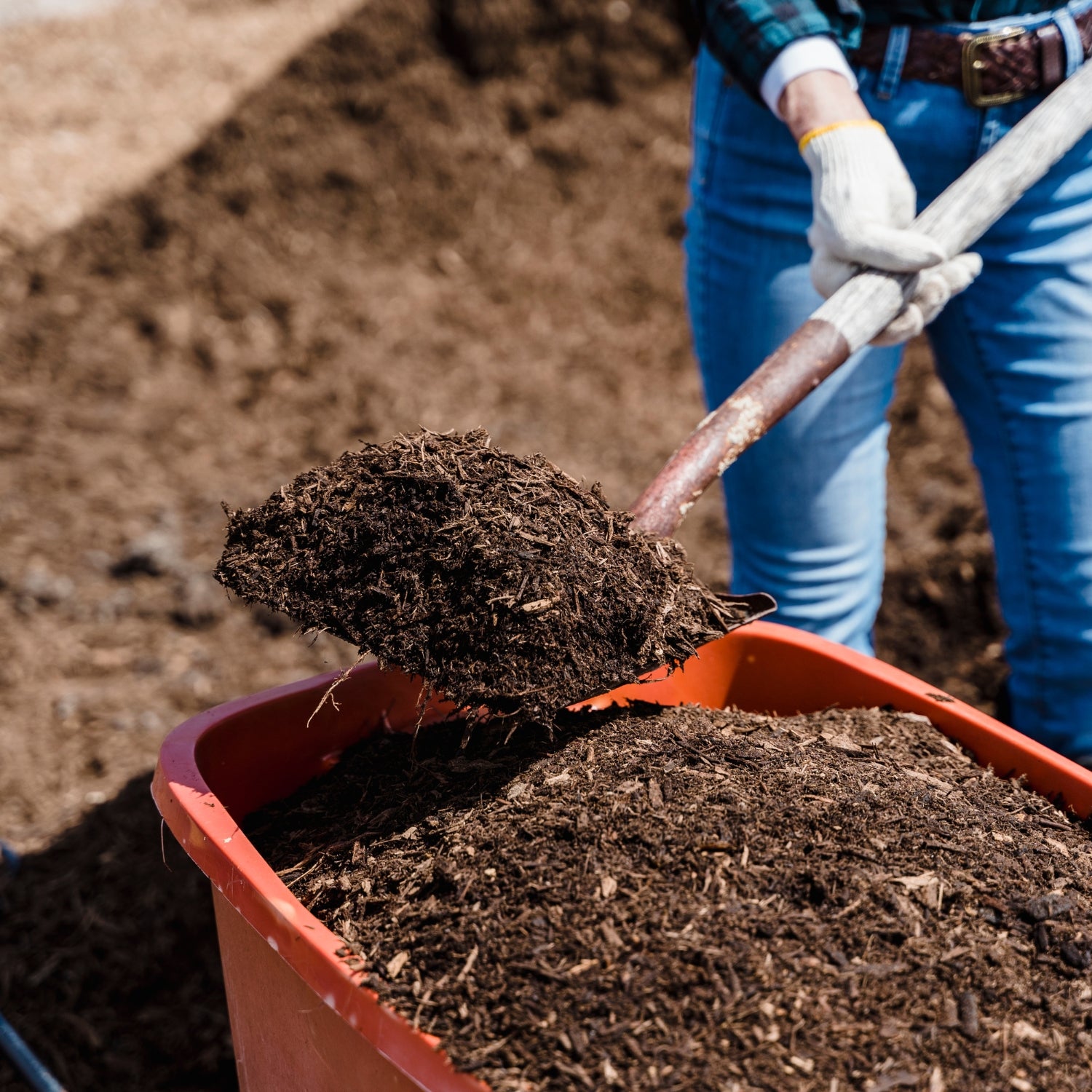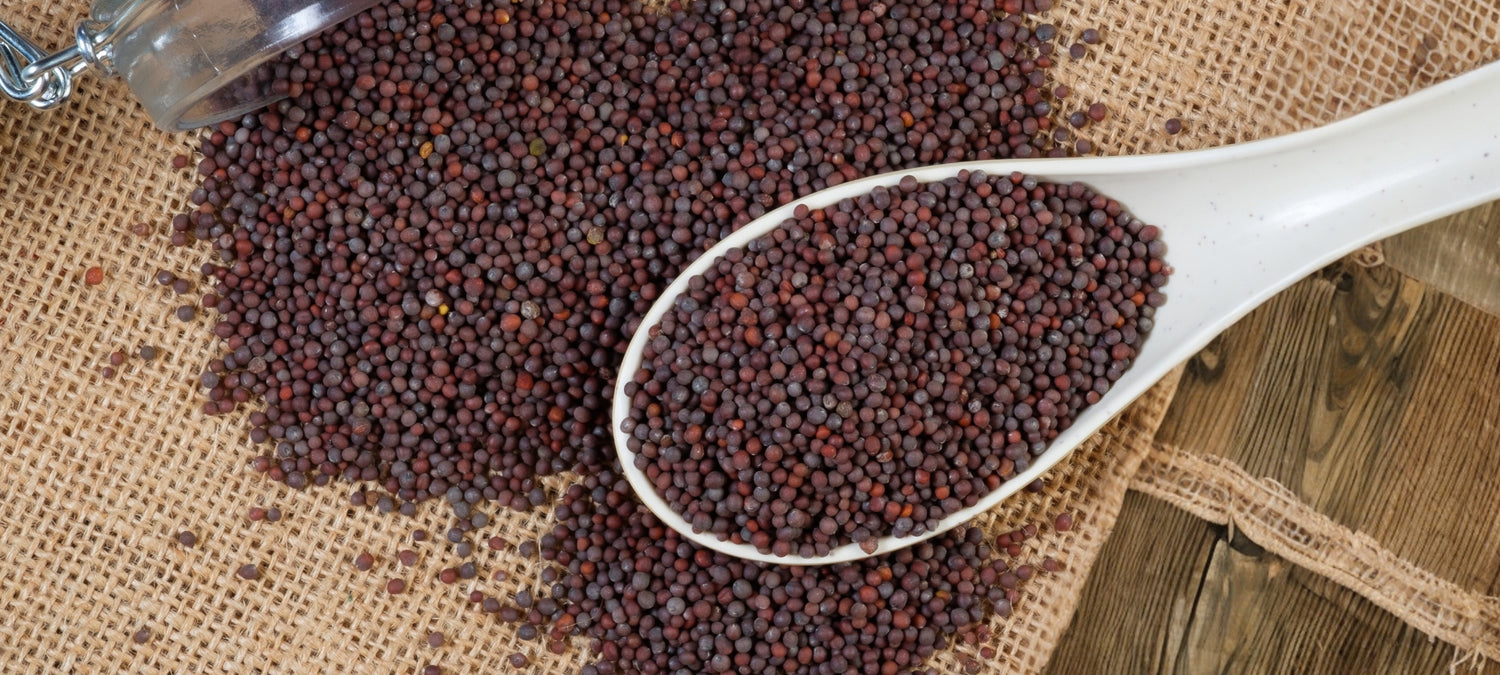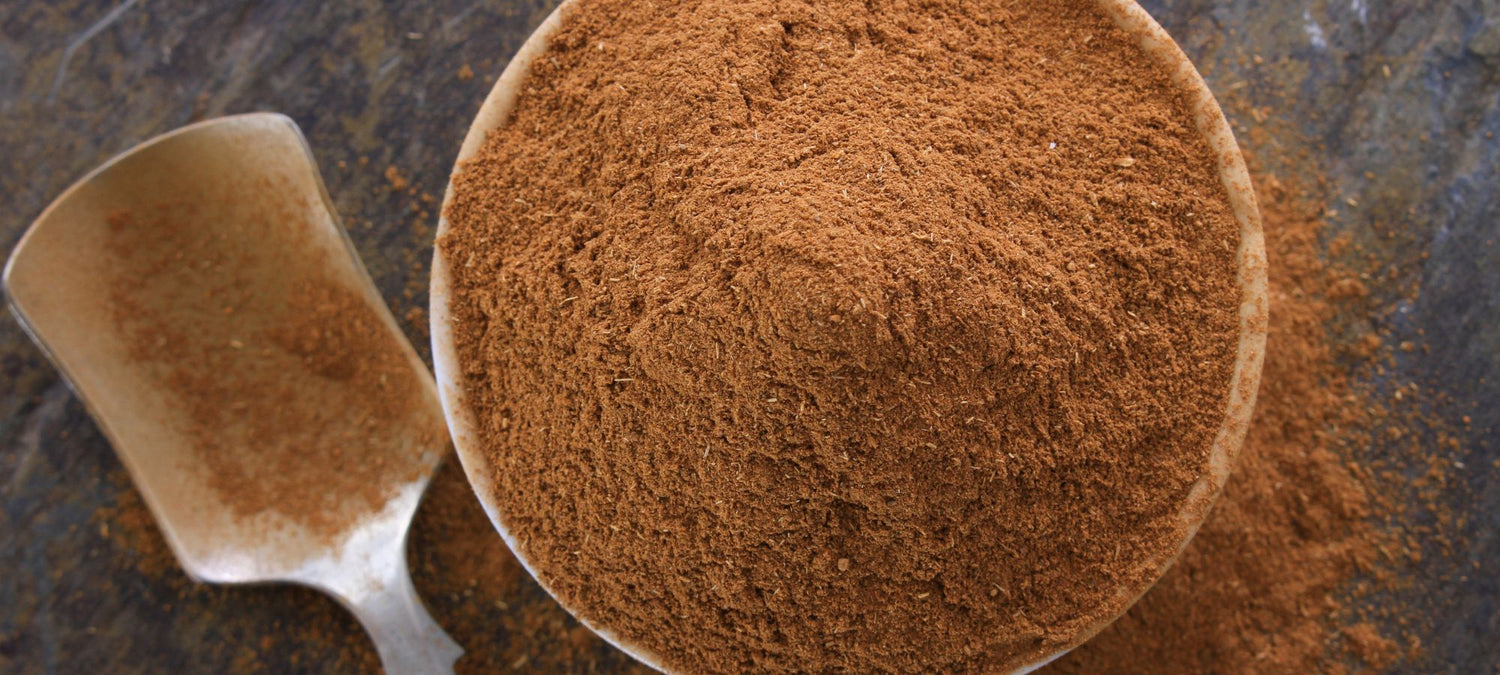The Importance of Composting in Regenerative Farming
The Importance of Composting in Regenerative Farming
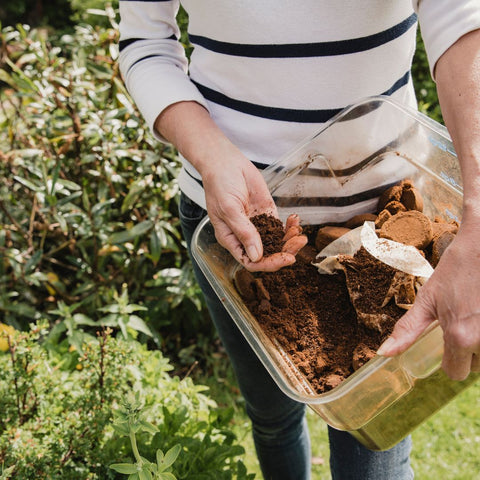 In the world of sustainable agriculture, composting is not just a practice; it's a philosophy. It represents a commitment to closing the loop in our food systems, turning waste into a resource that nourishes the earth. In the realm of regenerative farming, composting takes on an even greater significance. It's a key player in a much larger strategy aimed at rejuvenating and revitalizing the land. By returning organic matter to the soil, composting works wonders in enhancing soil health. It boosts the soil's nutrient content, fosters microbial activity, and improves its structure, making it more resilient to erosion and better at retaining water. This harmonious cycle not only enriches the soil but also supports a thriving ecosystem, promoting biodiversity both above and below the soil surface. Most importantly, composting embodies the core principles of regenerative farming: it's about creating a system that gives back more than it takes, ensuring the land remains fertile and productive for generations to come.
In the world of sustainable agriculture, composting is not just a practice; it's a philosophy. It represents a commitment to closing the loop in our food systems, turning waste into a resource that nourishes the earth. In the realm of regenerative farming, composting takes on an even greater significance. It's a key player in a much larger strategy aimed at rejuvenating and revitalizing the land. By returning organic matter to the soil, composting works wonders in enhancing soil health. It boosts the soil's nutrient content, fosters microbial activity, and improves its structure, making it more resilient to erosion and better at retaining water. This harmonious cycle not only enriches the soil but also supports a thriving ecosystem, promoting biodiversity both above and below the soil surface. Most importantly, composting embodies the core principles of regenerative farming: it's about creating a system that gives back more than it takes, ensuring the land remains fertile and productive for generations to come.
Introducing Coffee Grounds as a Composting Ingredient
As we delve into the world of composting, it's time to shed light on an often-overlooked resource – coffee grounds. Every day, countless cups of coffee are brewed, leading to a significant amount of spent coffee grounds, which are commonly tossed away without a second thought. However, these grounds hold immense potential when repurposed correctly. Coffee grounds offer a rich source of nitrogen, a critical component in the composting process. When added to compost, they infuse it with essential nutrients, making it even more beneficial for the soil. At I·M·POSSIBLE Farm, integrating coffee grounds into compost is not just an act of recycling; it's a testament to our innovative approach in sustainable farming. By using coffee grounds, we're not just diverting waste from landfills; we're enriching our compost with a nutrient-dense ingredient that supports our commitment to nurturing the land holistically.
Setting the Stage for the Discussion
In this blog post, we'll explore the multifaceted benefits of incorporating coffee grounds into compost. We'll delve into effective composting techniques that can enhance the health of your soil and, consequently, the vitality of your plants. Our focus will also extend to best practices rooted in regenerative farming principles, ensuring that our methods are not only effective but also environmentally responsible. This journey through composting with coffee grounds is designed to educate and inspire. Whether you're a seasoned farmer, a gardening enthusiast, or someone with a budding interest in sustainable practices, you'll find valuable insights into making the most of this common yet potent ingredient. So, stay tuned as we unfold the secrets of coffee grounds composting, and prepare to be inspired by the simple yet impactful ways you can contribute to a healthier planet.
Introduction to Coffee Grounds as a Soil Amendment
Every day, coffee enthusiasts around the world contribute to a mountain of used coffee grounds, often destined for the landfill. These grounds, commonly viewed as waste, are actually a hidden treasure for composting enthusiasts and regenerative farmers alike. At the heart of this transformation from waste to wonder is the partnership between I·M·POSSIBLE Farm and Best Slope Coffee Co. a collaboration that exemplifies the power of community and sustainable practices in agriculture.
Best Slope Coffee Co., known for its commitment to quality and sustainability, plays a pivotal role in this eco-friendly endeavor. By diligently saving their coffee grounds, they provide a crucial ingredient for the compost mix at I·M·POSSIBLE Farm. These grounds, once a simple byproduct of brewing coffee, are now integral to creating a balanced, nutrient-rich compost. Combined with cardboard and duck manure, the coffee grounds from Best Slope Coffee contribute to achieving the ideal carbon-to-nitrogen ratio. This ratio is essential for producing compost that is not only effective but also environmentally responsible.
This section will delve into the remarkable transformation that occurs when coffee grounds are introduced into compost. We'll explore the significant nutritional benefits these grounds provide to the soil, enriching it with essential nutrients vital for plant growth. Alongside this, we'll examine the physical improvements brought about by including coffee grounds in compost, such as enhanced soil structure and improved water retention. The journey of these coffee grounds, from a cup of expertly brewed coffee to a key component of regenerative farming at I·M·POSSIBLE Farm, is a testament to the power of sustainable agricultural practices and the incredible impact of collaborative community efforts.
Nutritional Value of Coffee Grounds for Soil
The humble coffee ground, often discarded without a second thought, is actually a powerhouse of nutrition for soil. At I·M·POSSIBLE Farm, these grounds are not just reused; they are revered for their ability to rejuvenate and enrich the soil in which our herbs thrive. Let's unpack the treasure trove of nutrients that coffee grounds bring to our compost and, subsequently, to our soil.
Nitrogen Content First and foremost, coffee grounds are an excellent source of nitrogen, a crucial element in plant growth and health. Nitrogen is a key component of chlorophyll, the molecule that gives plants their green color and is essential for photosynthesis. It also plays a vital role in protein synthesis, an important process for plant development and growth. In compost, the nitrogen in coffee grounds becomes available to plants, providing them with the necessary nutrient to grow robust and healthy. This is particularly beneficial in regenerative farming practices, where maintaining soil fertility without synthetic fertilizers is paramount.
Micronutrients But the benefits of coffee grounds don't stop at nitrogen. They are also rich in essential micronutrients that play vital roles in plant health. Potassium, found in coffee grounds, is crucial for overall plant health. It aids in various plant processes, including photosynthesis, nutrient absorption, and enzyme activation. Magnesium, another key component, is a central element of the chlorophyll molecule and is therefore essential for photosynthesis. Calcium, also present in coffee grounds, is vital for cell wall structure and stability, ensuring plants maintain their structure and strength. These micronutrients, often overlooked, are integral to the healthy growth of plants, and their presence in coffee grounds makes them an invaluable addition to compost.
Slow-Release Fertilizer Another significant advantage of using coffee grounds in compost is their role as a slow-release fertilizer. Unlike synthetic fertilizers that release nutrients quickly and can sometimes overwhelm and damage plants, coffee grounds decompose gradually. This slow decomposition ensures a steady supply of nutrients over time, providing plants with a consistent and balanced diet. This slow-release property is particularly beneficial in regenerative farming, where sustainable and long-term soil health is the goal. The continuous supply of nutrients helps maintain soil fertility, reducing the need for external inputs and fostering a more self-sustaining ecosystem.
Incorporating coffee grounds into compost is more than just a recycling effort. It's a deliberate and strategic choice to enrich soil with a natural, sustainable, and potent source of nutrients. At I·M·POSSIBLE Farm, the use of coffee grounds from Best Slope Coffee Co. symbolizes a commitment to nurturing the land with the best that nature, and our community, has to offer.
Improving Soil Structure with Coffee Grounds
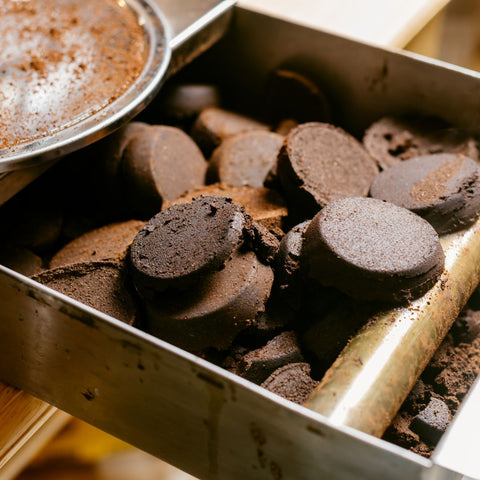 The contribution of coffee grounds to soil health extends far beyond just nutritional enrichment. At I·M·POSSIBLE Farm, where every element of the ecosystem is carefully considered, the structural benefits of adding coffee grounds to our soil are highly valued. Coffee grounds are not just nourishment for the plants; they are a tonic for the soil, improving its texture and functionality in ways that are crucial for regenerative farming.
The contribution of coffee grounds to soil health extends far beyond just nutritional enrichment. At I·M·POSSIBLE Farm, where every element of the ecosystem is carefully considered, the structural benefits of adding coffee grounds to our soil are highly valued. Coffee grounds are not just nourishment for the plants; they are a tonic for the soil, improving its texture and functionality in ways that are crucial for regenerative farming.
Aeration and Drainage One of the key structural improvements brought about by coffee grounds is enhanced soil aeration. The small, granular nature of coffee grounds helps to create tiny pockets of air within the soil. These pockets are essential for root respiration, allowing roots to breathe, grow, and absorb nutrients more effectively. Proper aeration is vital in preventing soil compaction, a common issue in heavily used agricultural lands. Compacted soil can inhibit root growth and reduce the effectiveness of water and nutrient uptake. By improving soil aeration, coffee grounds help create an environment where roots can thrive, leading to healthier, more robust plants.
In addition to aeration, coffee grounds also contribute to improved soil drainage. They help break up dense soil structures, allowing water to percolate more efficiently through the soil. This enhanced drainage prevents waterlogging, a condition that can lead to root rot and other plant diseases. By ensuring that excess water drains effectively, coffee grounds help maintain a balance in soil moisture levels, crucial for plant health.
Water Retention While improving drainage, coffee grounds also play a paradoxical role in enhancing soil water retention. This dual capability is a boon, especially during dry periods. The organic matter in coffee grounds has an excellent capacity to hold onto moisture, releasing it slowly over time. This property ensures that plants have access to water between watering cycles or rainfall, making them more resilient during drought conditions. The ability to retain water is particularly beneficial in regenerative farming systems, where water conservation and efficient use are key principles. By using coffee grounds in our compost, we at I·M·POSSIBLE Farm are able to create a soil environment that is not only rich in nutrients but also optimized for water management.
In conclusion, the structural improvements to soil brought about by the addition of coffee grounds are an essential aspect of their value in compost. By enhancing aeration, drainage, and water retention, coffee grounds contribute to creating a soil environment that is healthy, resilient, and conducive to the principles of sustainable and regenerative farming. This, in turn, leads to healthier plants and a more productive and sustainable farm ecosystem.
Enhancing Soil Microbial Activity
The soil is a living, breathing entity, teeming with microorganisms that play a pivotal role in the health and balance of the ecosystem. At I·M·POSSIBLE Farm, we recognize the immense value of these tiny inhabitants. Integrating coffee grounds into our composting practices does more than just feed the plants; it nurtures the soil's microbial life, which in turn supports a thriving farm environment.
Boosting Beneficial Microorganisms Coffee grounds are a boon for the beneficial microorganisms residing in the soil. These microorganisms, including bacteria, fungi, and protozoa, are the unsung heroes of soil health, playing a critical role in nutrient cycling and plant growth. When coffee grounds are added to the soil, they provide these microorganisms with a rich source of organic material. This material serves as food for the microbes, stimulating their growth and activity. As the microbial population flourishes, so does their ability to break down organic matter, releasing essential nutrients in a form that plants can readily absorb. Furthermore, some of these microorganisms form symbiotic relationships with plant roots, aiding in nutrient absorption and even protecting the roots from harmful pathogens. By boosting the population and activity of these beneficial microbes, coffee grounds contribute to a more robust and healthy soil ecosystem, which is the cornerstone of regenerative farming.
Organic Matter Contribution In addition to providing a direct food source for soil microbes, coffee grounds significantly contribute to the overall organic matter content in the soil. Organic matter is crucial for soil health, serving as a reservoir of nutrients, improving soil structure, and enhancing moisture retention. As coffee grounds break down, they integrate into the soil's humus, the rich, fertile component of the soil that forms the foundation of soil fertility. This increase in organic matter not only feeds the soil microbes but also improves the soil's ability to sustain long-term fertility. This is particularly important in regenerative farming, where the goal is to create a self-sustaining system that can maintain its productivity without external inputs. By adding coffee grounds to our compost and, subsequently, to our soil, we are effectively building the soil's organic matter, setting the stage for a thriving, resilient, and self-replenishing farming ecosystem.
In essence, the role of coffee grounds in enhancing soil microbial activity cannot be overstated. They act as a catalyst, invigorating the soil's biological processes and contributing to a vibrant, healthy soil ecosystem. This, in turn, leads to healthier plants and a more productive farm, fully aligned with the principles of regenerative and sustainable agriculture championed at I·M·POSSIBLE Farm.
Balancing Soil pH
A common misconception about coffee grounds is that they are highly acidic and may adversely affect soil pH. However, the reality of their impact on soil acidity is much more nuanced, particularly when they are used as part of a balanced composting strategy at I·M·POSSIBLE Farm.
Acidic Nature of Coffee Grounds It's true that coffee grounds originate from a naturally acidic beverage. However, the acidity of the grounds themselves often diminishes significantly once they have been used to brew coffee. The brewing process extracts most of the acidic compounds, leaving behind grounds that are more neutral than many people assume. In fact, the pH of used coffee grounds typically ranges from mildly acidic to nearly neutral. This makes them far less likely to create an overly acidic environment in the soil when used appropriately.
Impact on Soil pH When coffee grounds are incorporated into compost and then added to the soil, their impact on soil pH is relatively mild. They can slightly lower the pH of the soil, which can be beneficial for acid-loving plants like blueberries, azaleas, and rhododendrons. This subtle shift towards acidity can help unlock certain nutrients in the soil, making them more available to these types of plants.
However, it's important to note that the process of composting coffee grounds helps to balance their acidity. In a well-managed compost heap, where coffee grounds are mixed with a variety of other organic materials, the overall pH tends to stabilize. The composting process encourages microbial activity, which further breaks down acidic compounds. By the time the compost is ready to be used, its pH is generally well-balanced and suitable for a wide range of plants, not just those that prefer acidic conditions.
In summary, while coffee grounds do have an acidic origin, their actual impact on soil pH is quite moderate and can be beneficial in certain contexts. At I·M·POSSIBLE Farm, we utilize coffee grounds in our composting processes not just for their nutrient content and structural benefits, but also for their ability to gently modulate soil pH. This nuanced approach to composting, where every component is considered for its contribution to the overall health of the soil and plants, is a hallmark of our commitment to sustainable and regenerative farming practices.
How to Compost Coffee Grounds Effectively
Composting coffee grounds is a simple yet impactful way to contribute to the health of your garden and the environment. At I·M·POSSIBLE Farm, we've honed this process into an effective system, ensuring that the benefits of coffee grounds are fully realized. Here's a step-by-step guide on how you can incorporate coffee grounds into your compost, along with tips for maintaining a balanced compost mix.
Collecting Coffee Grounds
- Start by gathering used coffee grounds. If you're not a frequent coffee drinker, local coffee shops like Best Slope Coffee Co. are often happy to give away their grounds. Ensure the grounds are cool before adding them to your compost.
Creating Your Compost Pile
- Choose a spot for your compost bin or pile. It should be easily accessible and preferably in a semi-shaded area.
- Begin your compost pile with a layer of coarse, brown materials, like dry leaves, straw, or small twigs, to allow for aeration and drainage.
Adding Coffee Grounds
- Sprinkle a layer of coffee grounds over the brown materials. Coffee grounds are considered green compost material because they are rich in nitrogen.
- Avoid dumping large amounts of coffee grounds at once. Instead, add them in thin layers or mix them with other green compost materials like vegetable scraps or grass clippings.
Balancing With Brown Materials
Achieving the right balance between green and brown materials is a critical aspect of successful composting. Green materials, such as coffee grounds and kitchen scraps, are rich in nitrogen and provide the necessary proteins and amino acids for microbial growth. On the other hand, brown materials, like leaves, cardboard, and twigs, are high in carbon and offer the energy that microbes need to break down the greens efficiently.
Understanding the Green-to-Brown Ratio
- The ideal ratio in composting is approximately 3 parts brown material to 1 part green material. This balance helps to ensure that your compost pile decomposes efficiently without creating odor or attracting pests.
- If the compost has too much green material, it can become overly moist and smelly. Too much brown material, and the composting process slows down.
Layering Your Compost Pile
- Start with a layer of brown materials at the base of your compost pile. This layer helps with drainage and aeration.
- Add your green materials, in this case, coffee grounds, on top of the brown layer.
- Follow the green layer with another layer of brown materials. This practice helps to maintain the necessary balance and keeps your compost pile healthy.
Choosing the Right Brown Materials
- Dry leaves, straw, sawdust, and shredded newspaper are excellent choices for brown materials. At I·M·POSSIBLE Farm, we prefer to use cardboard and duck manure.
- Cardboard, apart from being a great carbon source, also helps in retaining the structure of the compost pile. It provides aeration and prevents the compost from becoming too dense.
- Duck manure, while technically a green material due to its nitrogen content, acts as a wonderful complement to coffee grounds, adding both nitrogen and additional carbon to the mix.
Regular Maintenance
- Turn your compost pile every few weeks to aerate it, which accelerates the composting process and prevents odor.
- Keep the compost moist, but not wet. If it's too dry, add water or more green materials. If it's too wet, add more brown materials.
Best Practices for Coffee Ground Composting
Effective composting with coffee grounds can significantly enhance the quality of your compost, turning it into a rich and beneficial supplement for your soil. At I·M·POSSIBLE Farm, we've honed several best practices that maximize the benefits of coffee grounds in our composting process. Here’s a closer look at these techniques and how they contribute to our success in sustainable farming.
Proper Incorporation of Coffee Grounds
- When adding coffee grounds to the compost pile, we ensure they are evenly distributed and not clumped together. This promotes better aeration and quicker decomposition.
- Following the addition of coffee grounds, we always water them in. This practice helps to release the nutrients from the grounds, allowing them to saturate the compost pile and become more readily available to the microorganisms.
Maintaining Optimal Compost Dimensions
- At I·M·POSSIBLE Farm, our compost piles are structured in long rows, approximately 4 feet wide and 3 feet tall. This size is ideal for maintaining the necessary heat and moisture levels in the pile.
- The dimensions of the compost piles are carefully chosen to ensure that they are large enough to generate sufficient heat for decomposition but not so large that they become anaerobic (lacking oxygen) in the center.
Utilizing Chickens in the Composting Process
- An innovative technique we employ involves allowing our chickens access to the compost piles. Chickens naturally forage through the compost, aiding in aeration and turning the material.
- As they scratch and peck at the compost, chickens help to break down larger materials more quickly. Additionally, their droppings add valuable nitrogen and other nutrients to the compost, enhancing its fertility.
Regular Monitoring and Turning
- Consistent monitoring and turning of the compost piles are crucial. We turn our compost regularly to maintain oxygen flow and ensure even decomposition.
- This practice also helps in evenly distributing the coffee grounds and other materials, preventing any hotspots or dry patches in the compost pile.
Balancing Compost Ingredients
- In addition to coffee grounds, we balance our compost with an appropriate mix of green and brown materials. This balance is key to accelerating the composting process and producing high-quality compost.
- The inclusion of varied materials ensures a broad spectrum of nutrients and microorganisms, resulting in a more robust and effective compost.
Mindful Watering
- While watering the coffee grounds is essential, overall moisture management of the compost pile is also crucial. We maintain the compost’s moisture at an optimal level, akin to a wrung-out sponge.
- Over-watering can lead to anaerobic conditions, while under-watering can slow down the composting process. Therefore, we adjust watering based on weather conditions and the moisture content of the pile.
By adhering to these best practices, we at I·M·POSSIBLE Farm have created an efficient and sustainable system for composting coffee grounds. These techniques not only enhance the quality of our compost but also exemplify our commitment to innovative and environmentally responsible farming practices.
Don'ts of Composting Coffee Grounds
Composting coffee grounds can be a highly beneficial practice for enhancing soil health and sustainability. However, there are certain pitfalls to avoid to ensure that this process is effective and beneficial. Here’s a list of common mistakes and misconceptions about composting coffee grounds that should be avoided:
Avoid Overloading the Compost with Coffee Grounds
- While coffee grounds are beneficial, adding too much to your compost can lead to imbalances. Excessive coffee grounds can make the compost too dense and moist, potentially leading to odor issues and slowing down the decomposition process.
- Stick to the rule of maintaining a balanced mix of greens (including coffee grounds) and browns in your compost.
Don’t Forget to Add Brown Materials
- Coffee grounds are considered green material in composting, meaning they are rich in nitrogen. Neglecting to balance them with brown materials (carbon-rich) like dry leaves, straw, or cardboard can disrupt the composting process.
- A good balance ensures efficient decomposition and prevents the compost from becoming too wet or smelly.
Do Not Use Coffee Grounds Alone as Fertilizer
- While coffee grounds are nutrient-rich, using them alone directly as fertilizer is not recommended. Uncomposted coffee grounds can clump and form a barrier on the soil, inhibiting water and air penetration.
- It’s best to compost coffee grounds first before using the compost as a soil amendment.
Avoid Ignoring the Compost Pile
- Composting is an active process. Simply adding coffee grounds and other materials to a pile and leaving it unattended can lead to problems like odor, pests, or poor decomposition.
- Regularly turn and monitor your compost pile to ensure proper aeration and decomposition.
Don’t Assume Coffee Grounds are Highly Acidic
- A common misconception is that coffee grounds are highly acidic and can acidify your soil. In reality, most of the acidity is removed during brewing, leaving the grounds with a near-neutral pH.
- Used coffee grounds are unlikely to significantly alter the pH of your compost or soil.
Do Not Compost Coffee Grounds with Additives
- If your coffee grounds contain added flavors or other non-natural additives, it’s best not to compost them. These additives can introduce unwanted chemicals into your compost and, eventually, your garden.
- Stick to plain, unflavored coffee grounds for composting.
Avoid Using Moldy Coffee Grounds
- If coffee grounds have been sitting out and have developed mold, it's best not to add them to your compost pile. Moldy coffee grounds can introduce harmful fungi or bacteria.
- Compost fresh coffee grounds or those that have been stored properly to avoid mold growth.
By avoiding these common mistakes and misconceptions, you can ensure that your coffee grounds contribute positively to your compost, enhancing its quality and effectiveness for your garden. Remember, successful composting is about balance, care, and understanding the nature of the materials you are using.
In our journey through this blog, we've explored the remarkable benefits of using coffee grounds in composting. From enriching the soil with essential nutrients to enhancing its structure for better plant growth, coffee grounds emerge as a hidden gem in sustainable farming. We've delved into the do's and don'ts, ensuring you can make the most out of this resource in your composting endeavors.
We encourage you to embrace this eco-friendly practice. Start incorporating coffee grounds into your compost and witness the transformation in your garden's health and productivity. Share your journey and experiences with us, and let's learn and grow together in this sustainable endeavor.
-
"Dive Deeper into Sustainable Practices"
- For more insights into innovative composting techniques and regenerative farming, check out these fascinating articles:
-
"Join the Conversation and Community"
- We're more than just a farm; we're a community passionate about sustainable living. Share your thoughts, experiences, and tips in the comments. Let's engage, learn, and grow together.
- If you're inspired, share this blog with friends and fellow gardening enthusiasts. Let's spread the word on sustainable practices!
- And if you find yourself intrigued by the world of regenerative farming, consider visiting I·M·POSSIBLE Farm to see these practices in action and explore the wonderful range of products offered by Sacred Plant Co.
Your engagement and participation are what drive us to continue exploring and sharing the wonders of sustainable living and regenerative farming. Let's embark on this green journey together!
